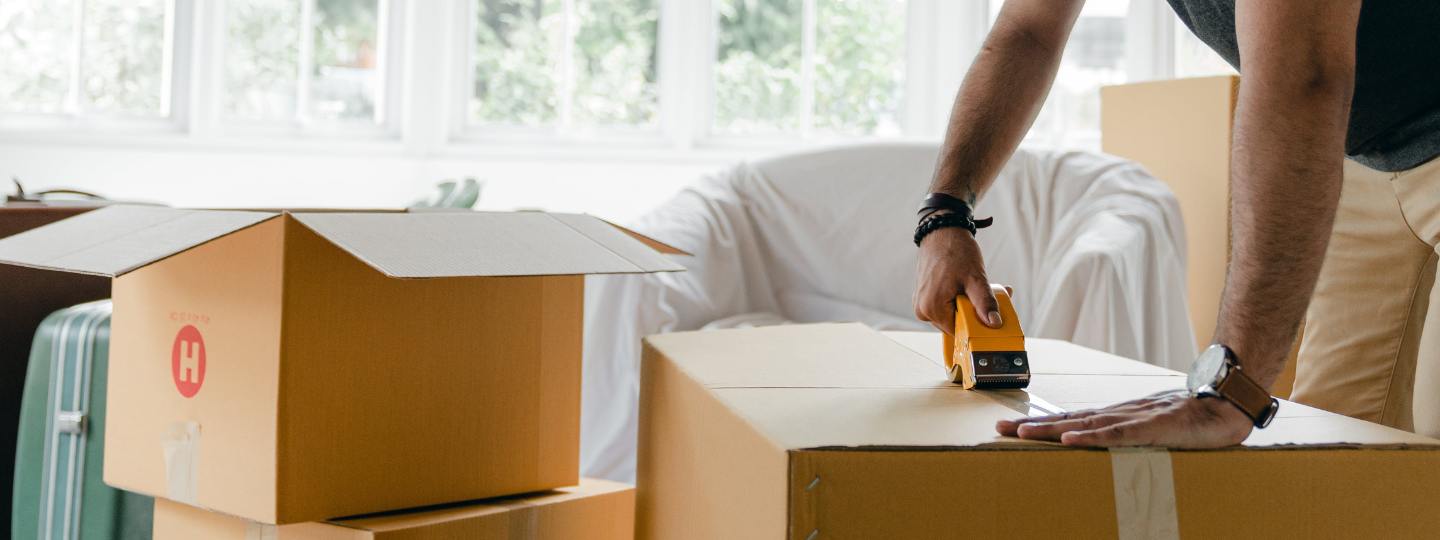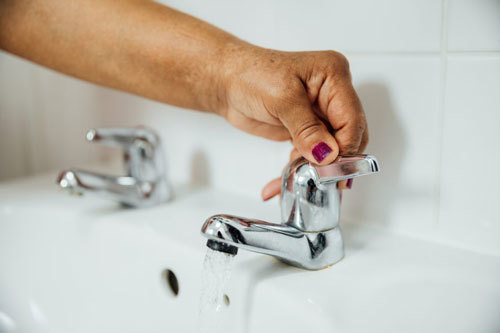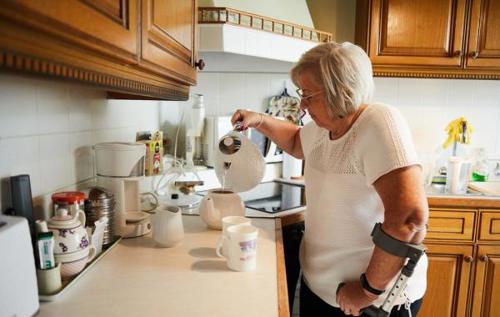Tips for moving home if you have arthritis
04 January 2024
Moving home is stressful at the best of times. But we know it can be particularly worrying when you’re dealing with pain and fatigue. Jack, 36, lives with psoriatic arthritis and recently moved house. Here he shares his advice on moving and packing.
Choosing where to live
When Jack moved home, he decided that he “was going to live in a house that was more arthritis-friendly". Here are just a few factors he considered:
Location
For Jack, choosing a location was one of the most important decisions he had to make.
“When I was living in my last house, the supermarket was quite far away,” he remembers. “If I had a lot of fatigue, walking 15-20 minutes to get groceries would wipe me out. And I’d have to sleep for two hours just to get my energy back."
“I didn’t really have a support network there either, so I was quite isolated.”
That’s why, when choosing the location of his next home, Jack picked somewhere more accessible.
“Now, I’ve moved closer to a train station and supermarket. And my gym and GP are just five minutes up the road,” he says. “I thought about my day-to-day routine and what I do every week. Now, everything’s short distances away, so I can maximise my rest time and pace myself. I live on the ground-floor now as well.”
When deciding where to live, Jack says it’s worth considering whether:
- You have a support network in the area.
- There's a bus stop nearby if you travel by public transport.
- There’s a car parking space close by if you drive. You should be able to get a disabled parking space outside or close to your house if you need one. This can usually be approved by your local council.
- If there are stairs and whether you would be able to climb these, especially during a flare-up.
- The house is dry.
- The property has a bath and carpet, if that's something you would find beneficial.
Aids and adaptations
 We know that everyday tasks like cooking, washing, and using the bathroom can become challenging if you’re dealing with pain and fatigue.
We know that everyday tasks like cooking, washing, and using the bathroom can become challenging if you’re dealing with pain and fatigue.
So, if you’re struggling, it might be worth considering whether you could get add some aids or adaptations to your home.
Aids are equipment that help you manage everyday tasks, for example, raised toilet seats and lever taps. Adaptations are changes or additions to your home, for example, a bath with built in handles or a wet room.
Aids and adaptations can be expensive. But you may be eligible to get aids and minor adaptations worth less than £1,000 for free from your local council. This is sometimes called ‘community equipment.’ To check if you’re eligible, simply ask your council for a free needs assessment.
If you need to make a major adaption to your home which will cost over £1000, you might also be able to get financial support from your local council. This is called a Disabled Facilities Grant.
However, the support you receive may vary, depending on your eligibility and where you live.
Warm and dry
When Jack moved to a previous house, he “quickly realised that it was cold and damp”. And the stress of the living situation began to take a toll on his physical and mental health.
“My routine became come back from work, have a hot bath, eat quickly, and then go to bed with an electric blanket. That's what my life was like over the winter. It was horrible. I was having a flare-up every 3-4 weeks and they would typically last for a week”.
As a result, Jack says he would “definitely now recommend looking for somewhere that’s warm and dry.”
Cupboards
Stretching for hard-to-reach cupboards can be difficult if you have sore or achy shoulders. Jack says in his last home, “the cupboards were really high up.”
“I’m not short but I would have to use a step ladder to access the very top ones, which — if your arthritis leaves you a bit wobbly — isn’t very good.”
That’s why he was thankful when he saw that the cupboards in his new home were much lower.
Consider the bills
Like many people with arthritis, Jack was worried about the soaring price of heating his home over winter.
“My last house wasn’t very airtight, so the bills were astronomical,” he says. “It’s worth looking at what the electricity and heating bills would be if you moved. Because, if you can’t keep it warm over winter, then it can be hard.”

To see how much energy a property typically uses, as well as its usual energy costs, it’s worth checking its Energy Performance Certificate (EPC).
This is a document that most households are required to have, which tells you:
- How energy efficient a building is.
- How costly it will be to heat and light your property.
- Suggestions on how you could reduce the building’s energy use and save money.
Flooring
Jack finds that his feet get sore when he stands on hardwood flooring for stretches of time. If you have psoriatic arthritis, you might also get swollen toes and fingers. This is known as dactylitis, or sausage digit, because it causes the whole finger or toe to swell up.
That's why, Jack says he “now would always live in a place with carpet.”
“In the kitchen and bathroom, I put a cork underlay under the laminate flooring too,” he says. “It almost feels spongey when you walk on it, which means it’s more insulated and warmer too.” Everyone is different though, so it’s about listening to your body and finding what works for you.
Moving home
Moving and packing can be stressful, but there are small steps you can take to make it a bit easier. Here are Jack’s tips for moving and packing:
Conserving energy/pacing
 On good days, when your pain isn’t too bad, it’s easy to overdo it. But this can lead to more pain and fatigue the following day. This is sometimes described as the ‘boom and bust’ cycle.
On good days, when your pain isn’t too bad, it’s easy to overdo it. But this can lead to more pain and fatigue the following day. This is sometimes described as the ‘boom and bust’ cycle.
To avoid this, it can help to plan, prioritise, and pace tasks. This simply means balancing the activities you need to do with breaks and rest.
When moving, Jack was lucky that he “had a long time to vacate the property” so he could “pack in stages and move bit by bit.”
We know this isn’t possible for everyone. But even packing a little bit each day (rather than all in one go) can make a difference.
Packing
Jack suggests “packing your stuff together not necessarily by rooms, but by what you need immediately, in the medium-, and long-term. That way, you can quickly access what you need straight away and leave other items to unpack slowly.”
Jack also suggests "packing medicines separately” and kept it by your side, so it doesn’t get lost in the move.
If you take refrigerated medicines, it's worth requesting information and obtaining a cool bag from your homecare company.
Get support
Don’t be afraid to ask for help when moving. Maybe you could get a hand from friends, family, or a local moving company, if you can afford it.
“I was quite stiff and painful that day, so hiring an extra person made a big difference. I think it’s worth it if you can."
Medicine and supports
Lifting boxes can be sore if you have arthritis. So, it might be worth timing your medicines and taking them before tasks you may find painful.
Jack also suggests “wearing knee or arm supports, if you use those, because even if you feel physically good on the day you may get tired or a bit sore.”
Changing doctors
 If you’re moving locations and usually see a rheumatologist or other specialists, you will have to decide whether you want to stay with your existing team or transfer to a new team.
If you’re moving locations and usually see a rheumatologist or other specialists, you will have to decide whether you want to stay with your existing team or transfer to a new team.
The NHS recommends that most people register with a GP close to where they live, so you can keep your prescriptions up-to-date and have a point of contact if needed.
Jack suggests “registering with a GP as soon as you can” because it can take a bit of time to get your records from one GP to another.
We know moving healthcare teams can be a little worrying, so we asked Dr Benjamin Ellis, Consultant Rheumatologist and Senior Clinical Policy Adviser at Versus Arthritis, for his advice.
He told us:
- In most cases, if you need specialist healthcare (such as rheumatology) it’s best to be supported by a team closer to where you live, so you can access the services that you need.
- It can take some time to switch services, so don’t ask to be discharged from your current specialist team until you’re connected with a new team. You might ask for your next appointment to be by phone/video in case you’ve moved out of the area by the time your appointment comes round.
- Once you’ve moved, choose a local GP surgery and register there as a patient. Learn more how to register with a GP surgery.
- Make an appointment with your GP to request a referral to the local service you need (such as rheumatology), so you can join the waiting list for a new appointment there.
- Health record systems in the NHS don’t usually connect to each other between hospitals, so don’t assume your new clinical team will have access to your old records. If possible, ask your existing specialty service for a (paper or electronic) copy of your previous clinic letters, and copies of any key results (such as X-rays, or scans), and take these along to your first appointment with your new team.
- Once you’ve started your care with the new team — and only once all arrangements are in place for your medicines to be approved and prescribed in your local area — then let your previous department know that you are under the care of a new team and ask them to discharge you.
We’re here to help
For more advice or support, you can also:
- Call our free helpline on 0800 5200 520.
- Chat to our Arthritis Virtual Assistant.
- Join our online community.
- Stay in touch and follow us on X (Twitter), Facebook and Instagram.